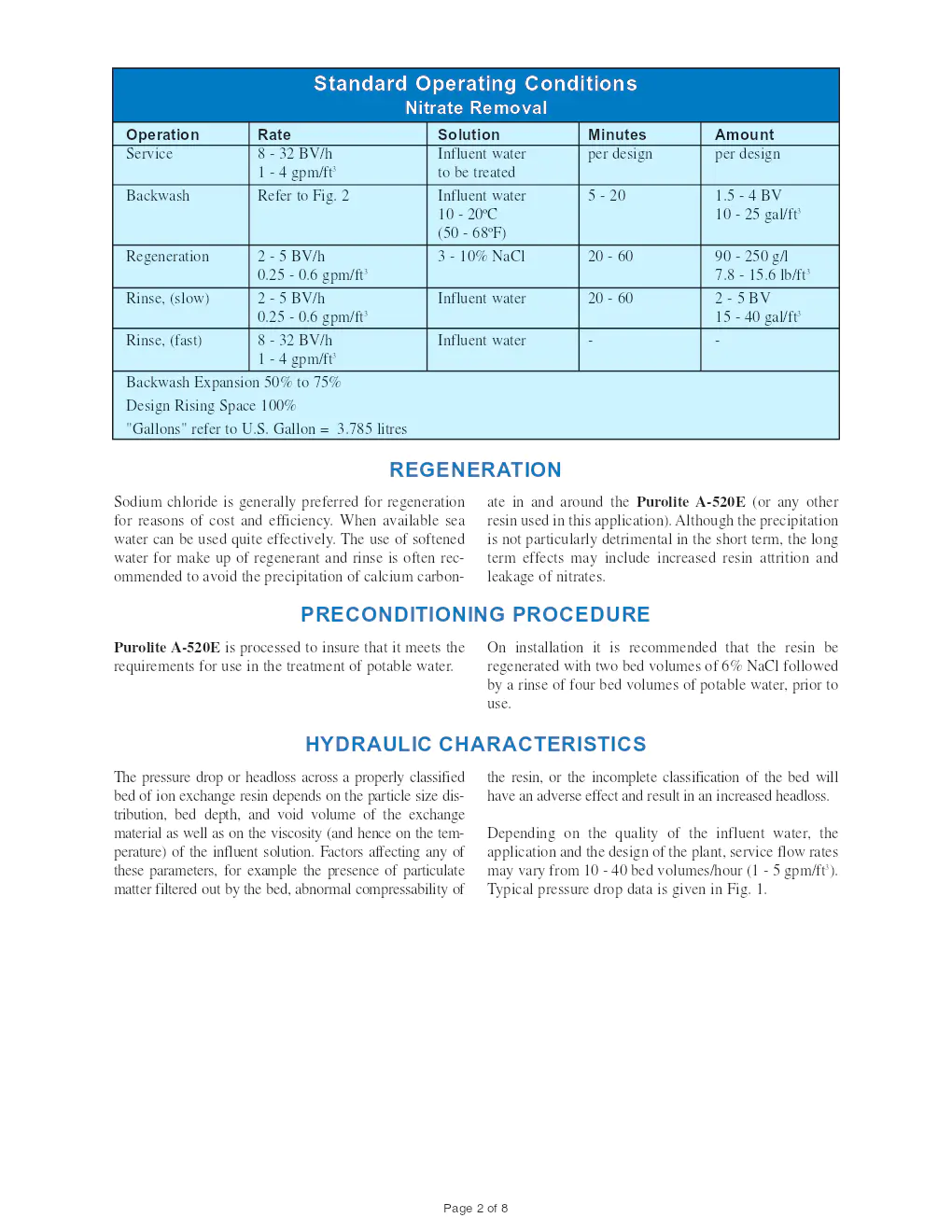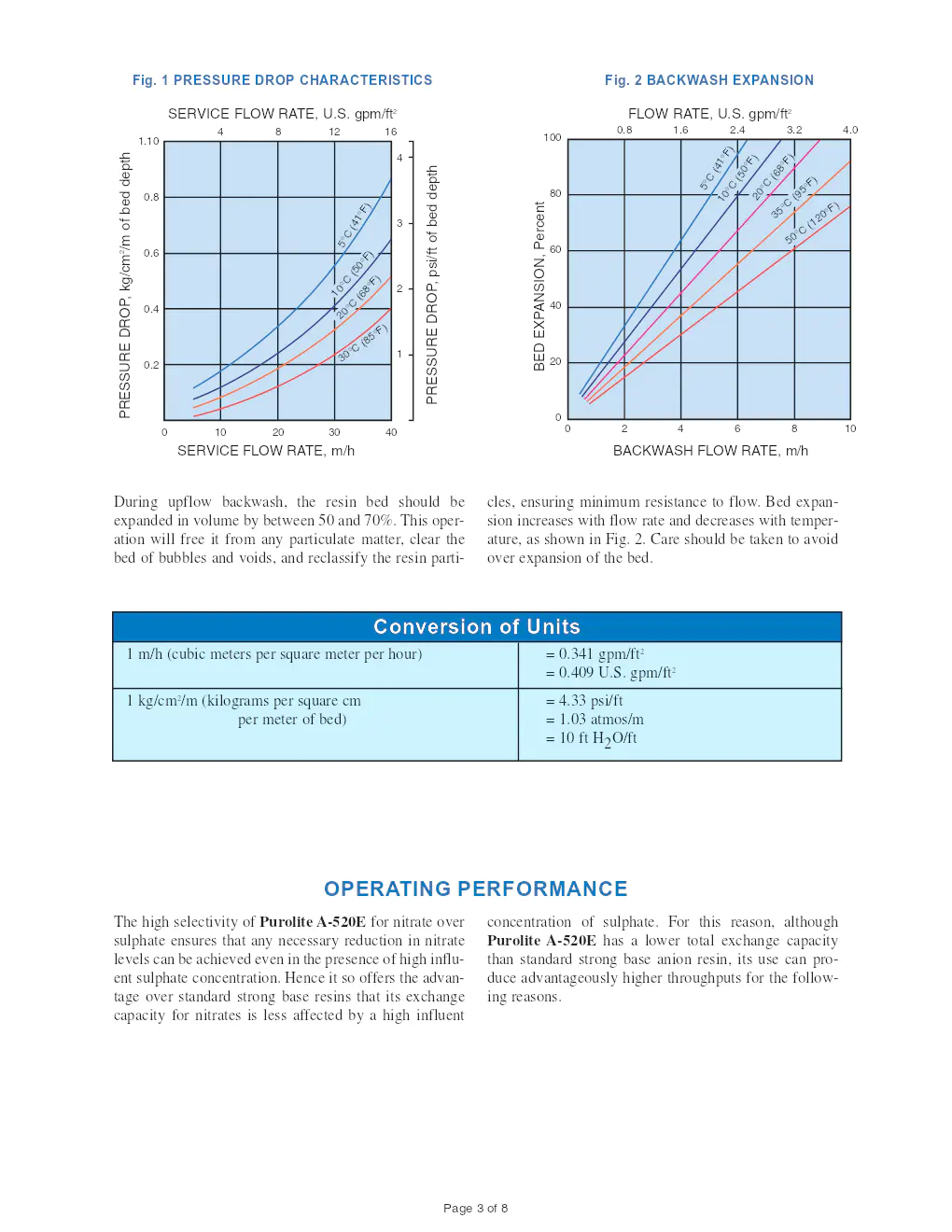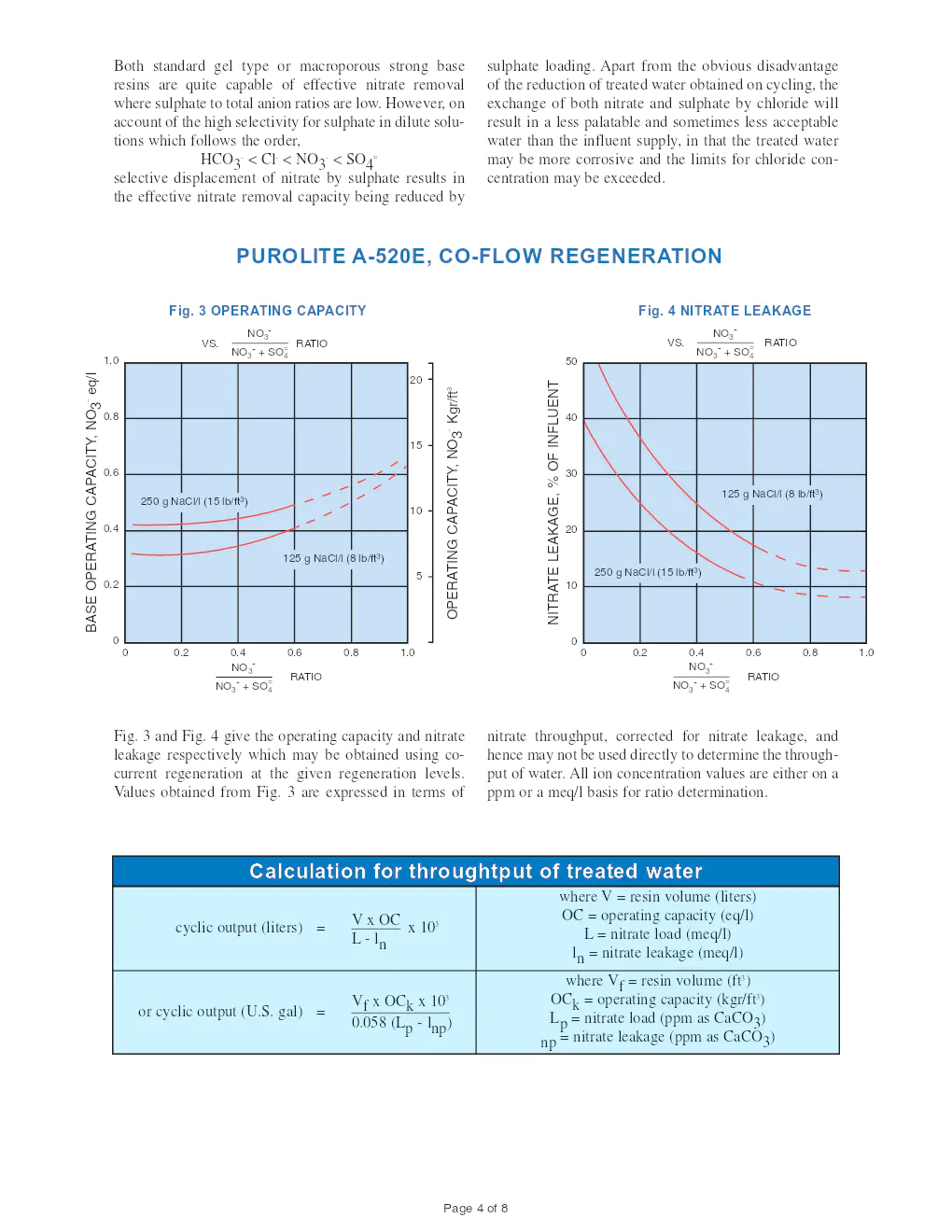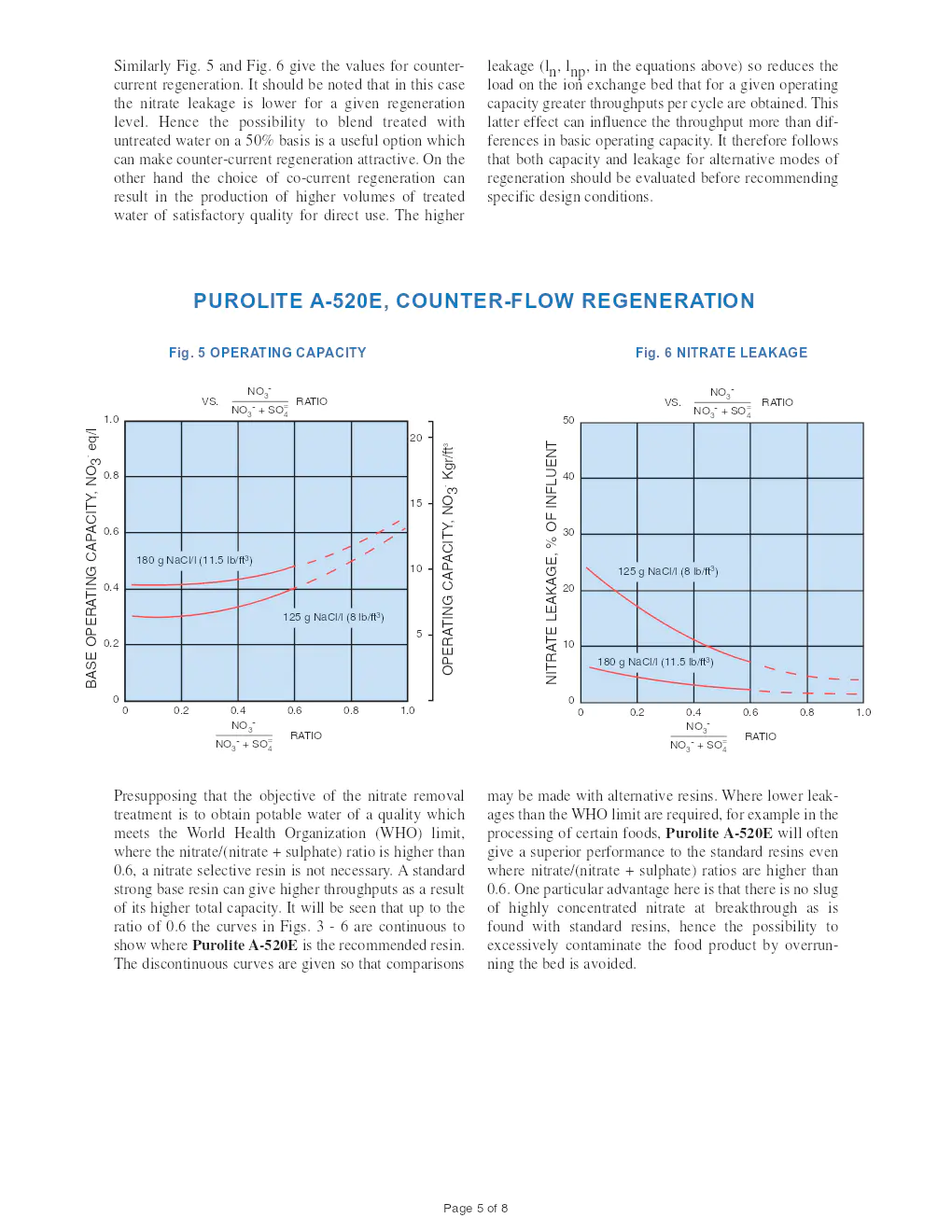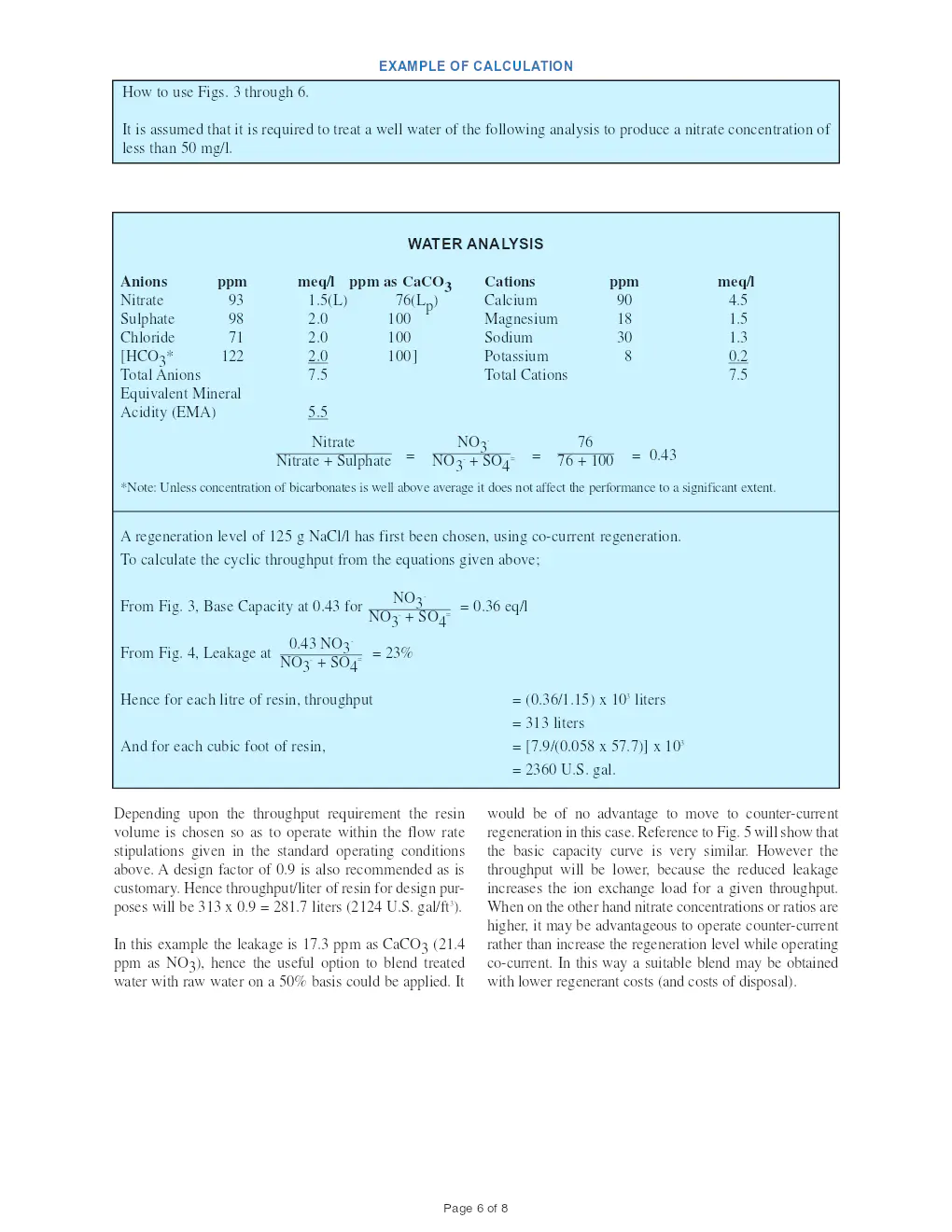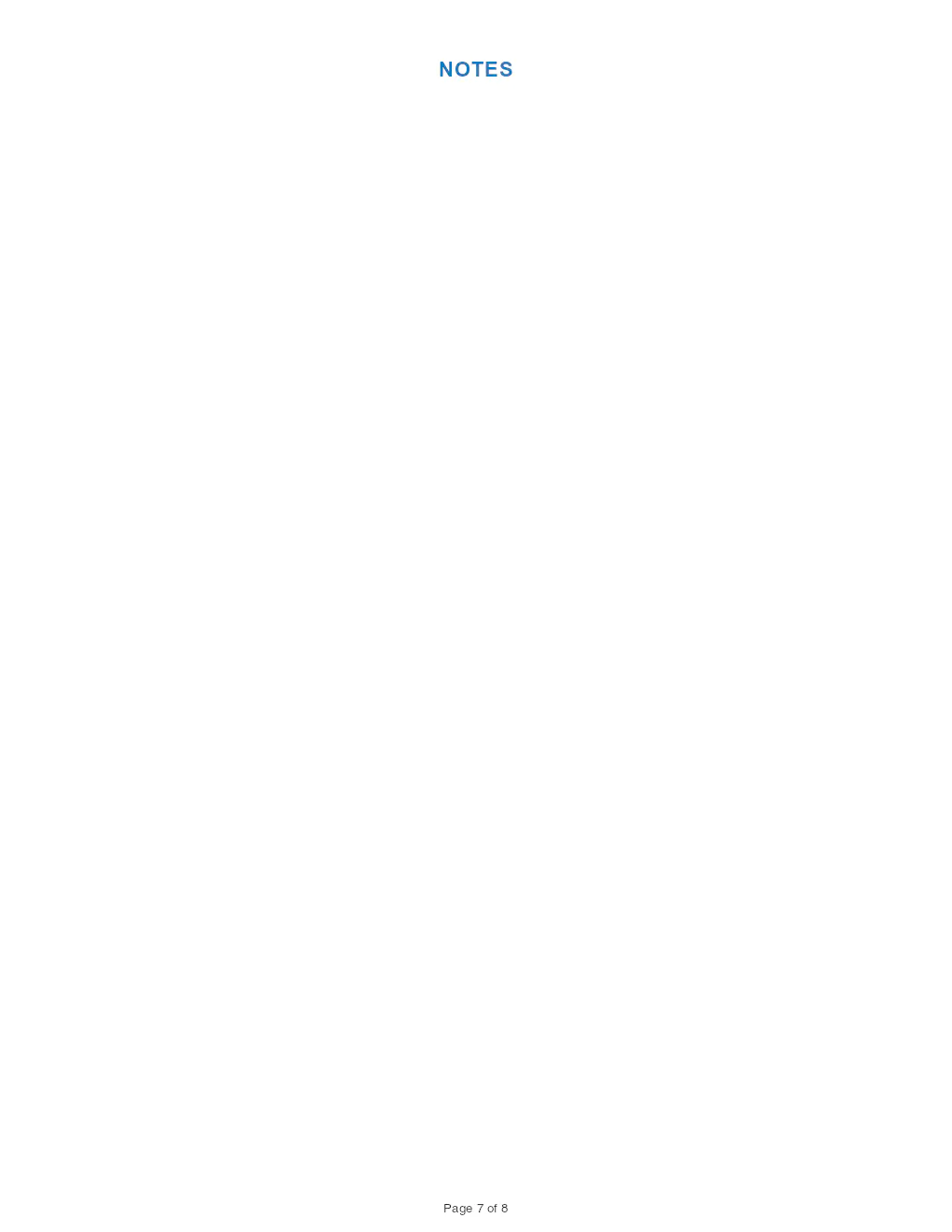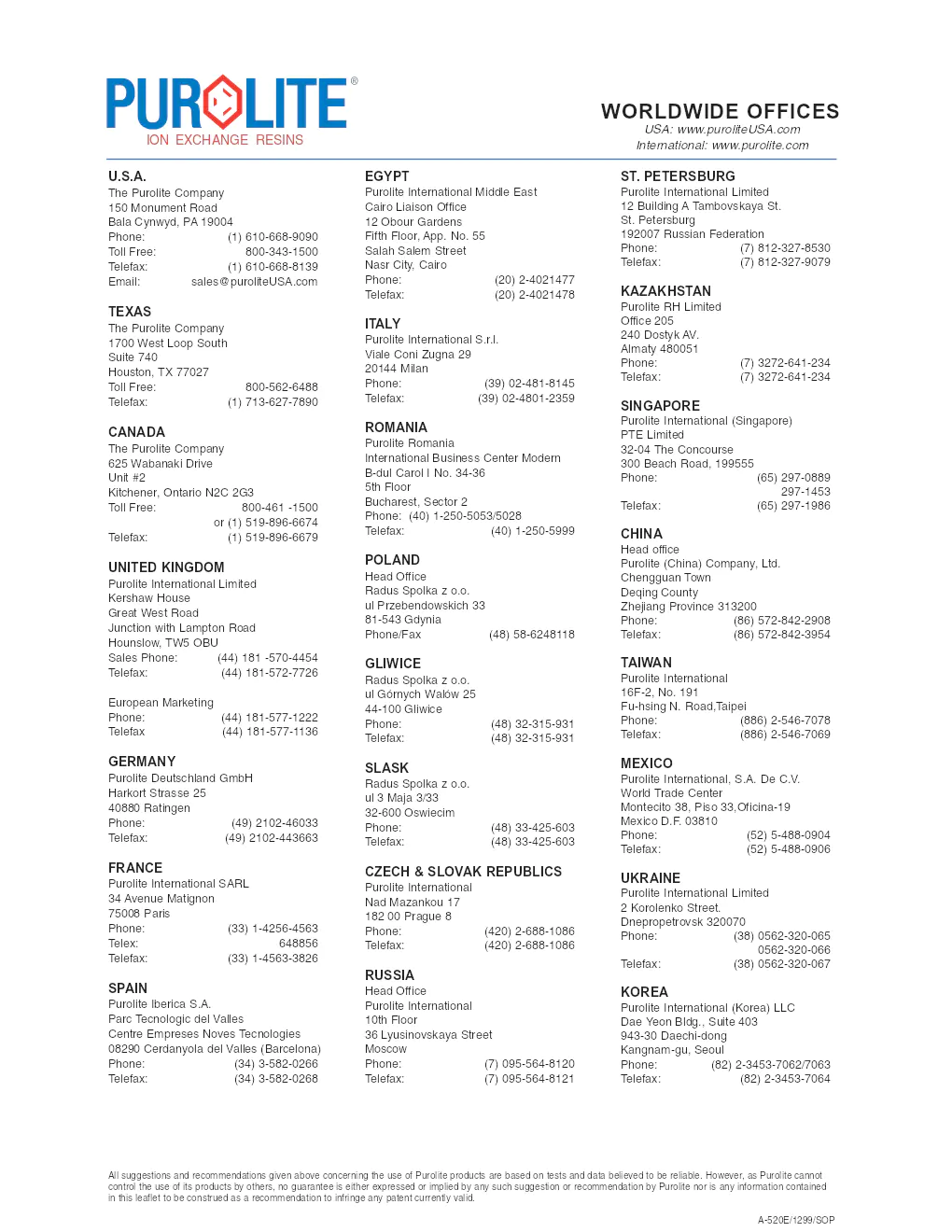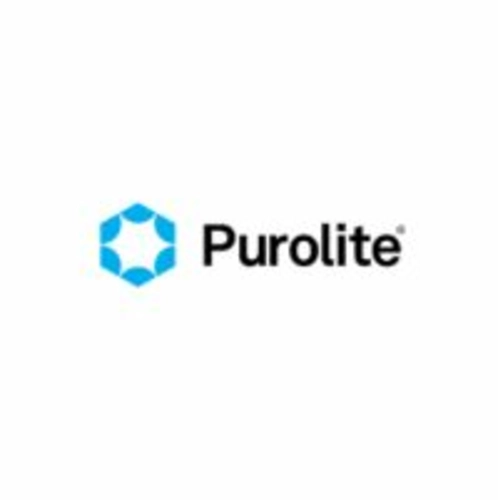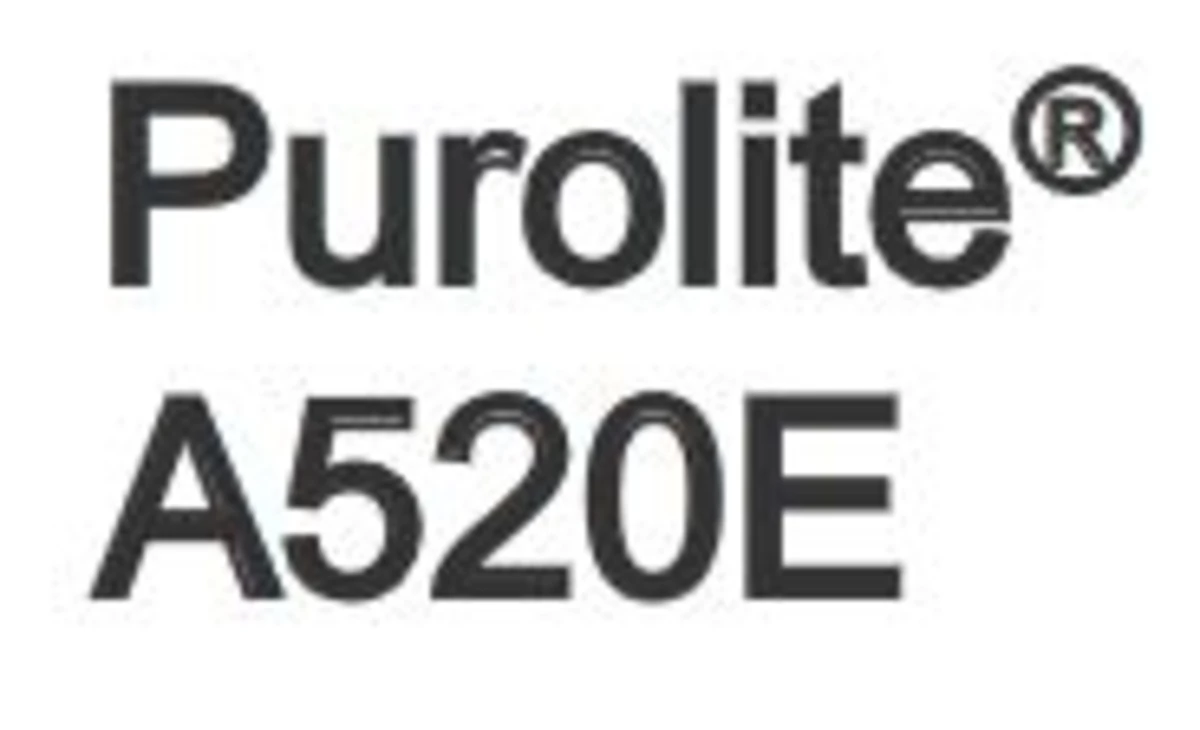fiche technique de la résine échangeuse d'ions purolite a-520e
Fiche technique sur la résine purolite a-520e pour l'élimination sélective des nitrates
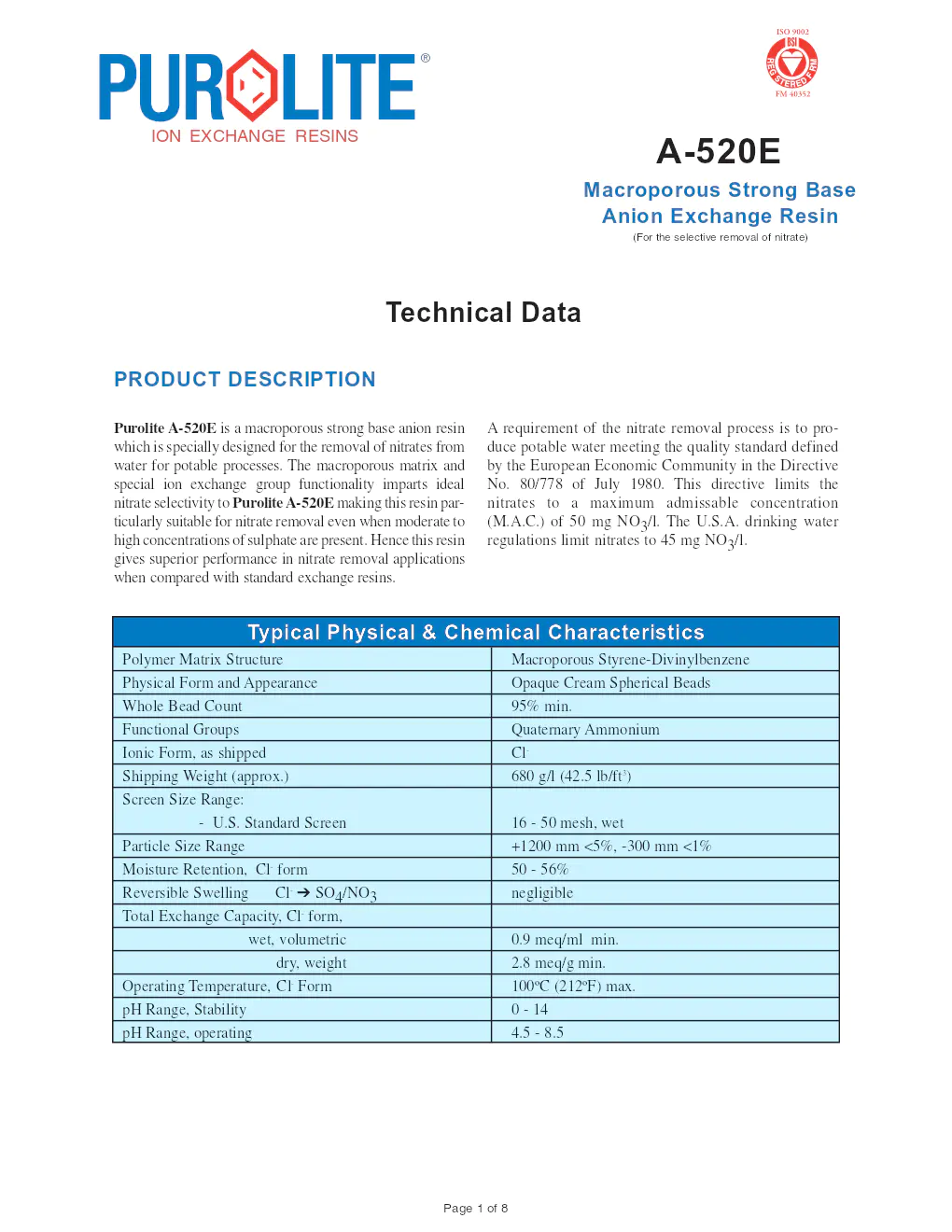
Contenu du document
ion exchange resins a-520e
macroporous strong base anion exchange resin(For the selective removal of nitrate)
technical data
product description
Purolite A-520E is a macroporous strong base anion resin specially designed for the removal of nitrates from water for potable processes. The macroporous matrix and special ion exchange group functionality imparts ideal nitrate selectivity to Purolite A-520E, making this resin particularly suitable for nitrate removal even when moderate to high concentrations of sulphate are present. Hence, this resin gives superior performance in nitrate removal applications when compared with standard exchange resins.
A requirement of the nitrate removal process is to produce potable water meeting the quality standard defined by the European Economic Community in the Directive No. 80/778 of July 1980. This directive limits the nitrates to a maximum admissible concentration (M.A.C.) of 50 mg NO3/l. The U.S.A. drinking water regulations limit nitrates to 45 mg NO3/l.
typical physical & chemical characteristics
- Polymer Matrix Structure: Macroporous Styrene-Divinylbenzene
- Physical Form and Appearance: Opaque Cream Spherical Beads
- Whole Bead Count: 95% min.
- Functional Groups: Quaternary Ammonium
- Ionic Form, as shipped: Cl-
- Shipping Weight (approx.): 680 g/l (42.5 lb/ft3)
- Screen Size Range: U.S. Standard Screen 16 - 50 mesh, wet
- Particle Size Range: +1200 mm
